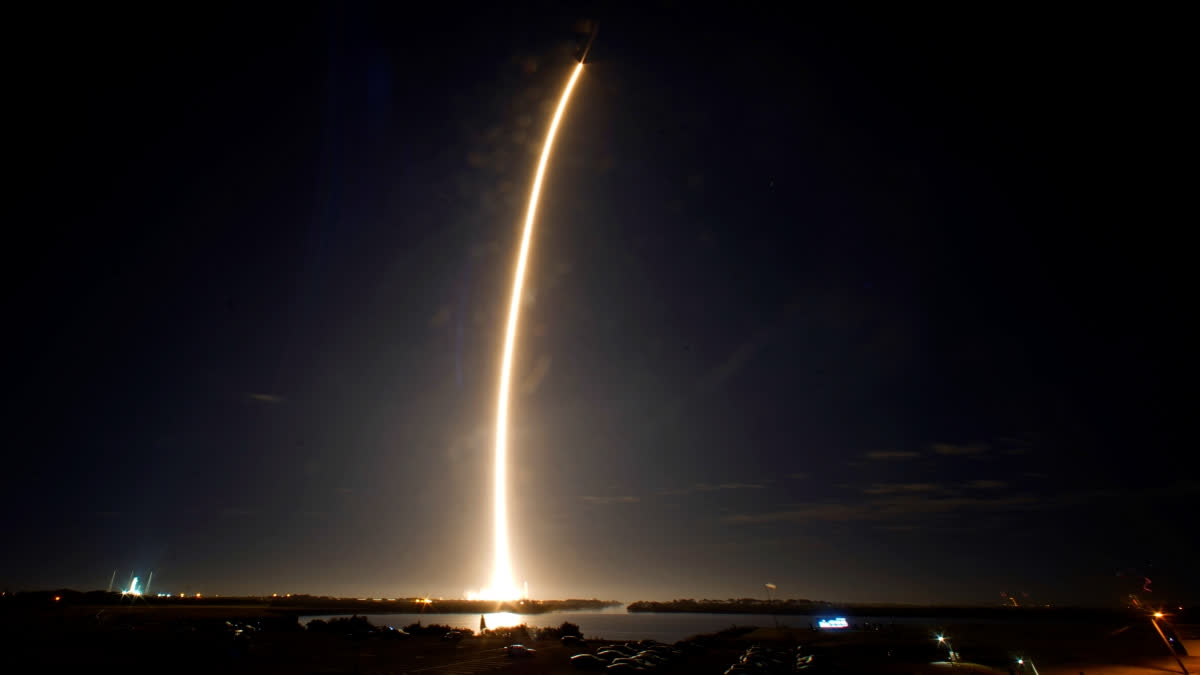CAPE CANAVERAL: Another private U.S. company took a shot at the moon Thursday, launching a month after a rival's lunar lander missed its mark and came crashing back.
NASA, the main sponsor with experiments on board, is hoping for a successful moon landing next week as it seeks to jumpstart the lunar economy ahead of astronaut missions.
SpaceX's Falcon rocket blasted off in the middle of the night from NASA's Kennedy Space Center, dispatching Intuitive Machines' lunar lander on its way to the moon, 230,000 miles (370,000 kilometers) away. If all goes well, a touchdown attempt would occur Feb. 22, after a day in lunar orbit.
Only five countries — the U.S., Russia, China, India and Japan — have scored a lunar landing and no private business has yet done so. The U.S. has not returned to the moon's surface since the Apollo program ended more than five decades ago.
"There have been a lot of sleepless nights getting ready for this," Intuitive Machines' co-founder and chief executive Steve Altemus said before the flight.
The Houston-based company aims to put its 14-foot (4.3-meter) tall, six-legged lander down just 186 miles (300 kilometers) shy of the moon's south pole, equivalent to landing within Antarctica on Earth. This region — full of treacherous craters and cliffs, yet potentially rich with frozen water — is where NASA plans to land astronauts later this decade. The space agency said its six navigation and tech experiments on the lander can help smooth the way.
NASA's first entry in its commercial lunar delivery service — Astrobotic Technology's Peregrine lander — stumbled shortly after liftoff in early January. A ruptured fuel tank and massive leak caused the spacecraft to bypass the moon and come tearing back through the atmosphere 10 days after launching, breaking apart and burning up over the Pacific.
Others made it to the moon before wrecking. An Israeli nonprofit's lander crashed in 2019. Last year, a Tokyo company saw its lander smash into the moon followed by Russia's crash landing.
Only the U.S. has sent astronauts to the moon with Apollo 17's Gene Cernan and Harrison Schmitt closing out the program in December 1972. That was it for U.S. moon landings until Astrobotic's short-lived try last month.
Intuitive Machines nicknamed its lander after Homer's hero in "The Odyssey." "Godspeed, Odysseus. Now let's go make history," said Trent Martin, vice president of space systems.
NASA is paying Intuitive Machines $118 million to get its latest set of experiments to the moon. The company also drummed up its own customers, including Columbia Sportswear, which is testing a metallic jacket fabric as a thermal insulator on the lander, and sculptor Jeff Koons, who is sending up 125 inch-sized moon figurines in a see-through cube.
The lander also is carrying Embry-Riddle Aeronautical University's Eaglecam, which will snap pictures of the lander as they both descend.
The spacecraft will cease operations after a week on the surface.
Read More



